When I got Shaun’s email, I was not only excited, but I was pretty impressed too. Often, I get a bit of push back when I challenge people to think differently about tree climbing in their school. But this, this email showed me what proactive looks like and has left me with lots of hope!
Shaun Hurlow is the principal at Hamilton Seventh-Day Adventist School. I met him when he attended the Nature Play Conference and came on my conference workshop ‘Managing Risks and Children in Nature’.
There is never enough time on a workshop to cover all the things I want to talk about so Shaun approached me at the end. He wanted to know my opinion on tree climbing in schools.
I love to talk about tree climbing with teachers! I get very passionate about it as anyone who knows me will vouch for.
Health and Safety always comes up in this conversation and if you are interested in Health and Safety and tree climbing, make sure you read my article on that here.
Here are the points I covered with Shaun in our conversation.
When I think about tree climbing, it is good to start with our role in risky play activities. Our role is to prevent significant harm.
Considering the term significant harm, there is a difference between learning injuries and life altering injuries. We are trying to prevent life altering injuries or significant harm. Scratches, bruises, grazes and the odd broken bone are considered Learning injuries and are a normal part of growing up.
Accepting that it’s OK for children to get learning injuries and understand that learning injuries don’t constitute being a notifiable event for health and safety purposes, is a big step towards allowing tree climbing in schools.
In saying this, for a school we do have a responsibility to ensure we manage hazards that have the potential to cause significant harm. So we can’t be complaisant either.
I mentioned to Shaun that some trees are better tree climbing trees than others so defining what a good tree climbing tree is for a school ground is a good start. Some have lots of branches to hold onto and some have few and far between with the potential of a significant fall. Some are thin and others are too thick to hold onto easily.
An example was that if they were to fall from a tree with lots of branches, they will probably bounce off the branches to the bottom and be a bit bruised. But it’s better than a straight drop to the ground from a height!
This is also not static – it changes with age. A tree that isn’t a good tree climbing tree for a 5-year-old could be a really good tree climbing tree for a 10-year-old.
Another important aspect is checking trees for dead branches or rotten wood. Sometimes this is hard to see but we can do some testing to find this information out or if you are unsure or suspicious you can engage your local arborist.
The last question Shaun asked was how high children should climb. There are no rules on this, but I can share my own observations and thoughts and they don’t involve painting lines on the tree.
‘Children should be able to climb a good tree climbing tree, as high as they can comfortably get down.’
For this response I often get the ‘I had a child who climbed really high and couldn’t get down’. Yes, there are children who will go up high and then realise it’s a bit tricky to get down, but they do always get down.
In these situation I suggest that children climb up a new tree a couple of branches and then come down so they can understand and assess for themselves, how easy that tree is to get up and down.
I haven’t had any major problems with children getting really stuck up trees, meaning I have never left a kid in a tree for the rest of their life – they have always come down!
What do we do if they do get scared or stuck or if they are climbing up high and you are the one feeling nervous?
When a child tells me, they are stuck I will encourage them to take one step at a time i.e. to move a foot first, then the other foot and then a hand etc… If that doesn’t help, I will tell them which foot to move or which hand to move and where to put it.
Sometimes I will climb the tree and tap on the foot that needs to move as when a child is scared or very young, saying ‘move your left foot’ is hard to comprehend, but a tap on the foot is really clear. The other aspect to that is that I can speak in a quieter voice to help calm the child rather than yelling from down on the ground.
I will encourage and support them to get down by themselves, but I won’t do it for them. A child will miss out on the learning opportunity if I do that. I can be with them up there and support them emotionally if they need me too.
When we are outside our comfort zone and feeling scared being able to learn and develop strategies to help in that moment, is beneficial for a child’s emotional development and for building resilience.
The other great thing is that the learning from the experience can be transferred to other challenging situations the child faces. ‘Remember when you were finding it hard to get down the tree and you did it, what helped you then?’
The second part to this is when the child is comfortable climbing high and as the adult, we are the one starting to feel nervous about how high they are climbing. Children who often engage in risky play activities are very aware of their own capabilities. They are more capable than we give them credit for.
None the less, we are watching a child climb the tree and they are 10 metres up. Our risk management mind is kicking in and thinking oh my gosh what if the child fell from there!!!!
I encourage teachers to share their feelings rather than say things like ‘you are too high’, ‘you might fall’ or ‘come down now’. A reactive response can encourage rebellion in those children or they could become fearful.
Instead saying something like ‘Sarah, I can see you are really high in the tree. I am feeling really nervous right now seeing you up so high as I am worried that the branches are not as strong up there’.
I have found children respond well to this type of approach as you are treating them as a capable and able human being. You are empowering them with the decision making and you are taking ownership for your feelings rather than projecting your fears onto the child.
Earlier in the session I had mentioned to Shaun and all the other attendees to involve the children as much as you can in the risk management and group management. This is what the curriculum says but sometimes we tend to box it and only apply it to certain things. The children will surprise you with their abilities if you enable them to take control.
I wasn’t specifically talking about tree climbing and this is why I want to share what Shaun did with his class as it is a wonderful and easy to follow process that all schools could follow.
I am literally going to share Shaun’s email word for word:
I took one of my classes out into the playground this week and we did an audit on all of our trees deciding whether it was safe by looking at the following aspects:
1) Is access to the tree easy?
2) Are there many branches through the middle of the tree to prevent a fall straight to the ground?
3) What are the condition of the branches as a whole? (Dead wood visible?)
We then looked at safe climbing practices:
1) Identifying dead branches
2) Testing the strength of branches
3) Always having three points of contact
The kids loved it and I have been overhearing them assessing other areas of risk and identifying hazards.
I love a proactive approach like this! I absolutely love that the children were the assessors and they took their learning and applied it to other areas of their play. They will gain so much from doing this and as Shaun saw, it is such transferable learning.
One outcome was that a tree did need to be taken down but instead of cutting it completely down to the ground, they turned it into a wonderful nature play feature that has added lots of interest, opportunities for play and some more loose parts play with the log rounds.
This ‘Tree Audit’ could be an annual or twice-yearly audit and should be reassessed after large high-wind storms. Each class could do their own audit and make it a whole school approach.
‘A Tree Audit could be done by any school and should be done by every school.’
A big thank you to Shaun for being so proactive and sharing his experience with us all. There are so many wonderful benefits of re-introducing tree climbing in schools which Shaun gets the privilege of seeing first hand.
Written by Celia Hogan, Founder of Little Kiwis Nature Play
Photo credit: Shaun Hurlow
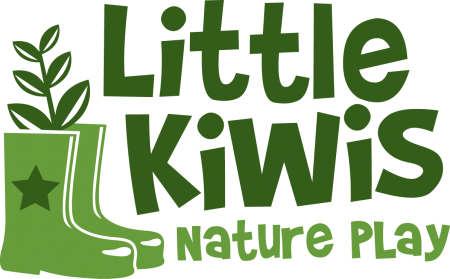
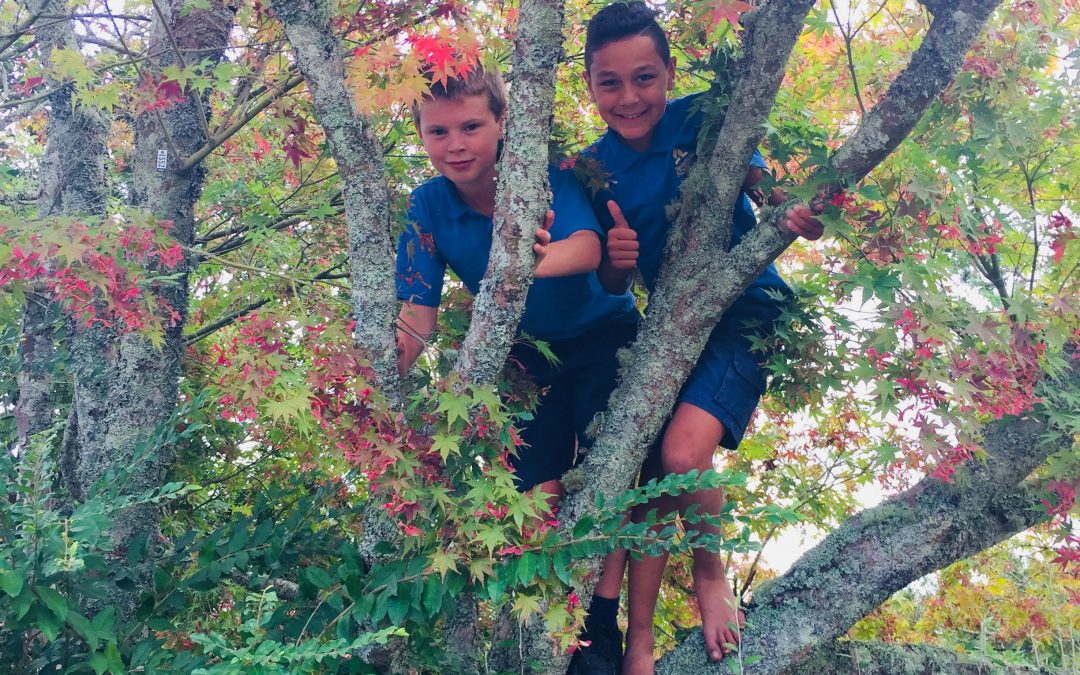
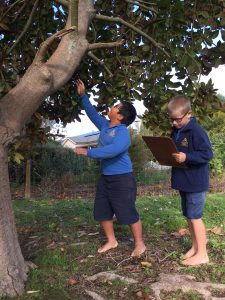
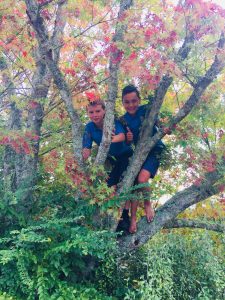

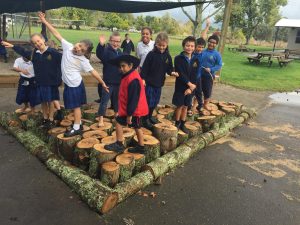
This was a great approach to get the kids as assessors of suitable climbing trees and Love the tree climbing structure!
What a fantastic story. There is so much wisdom shared here, and the tree audit sounds very engaging. Sometimes people polarise RISK-SAFE and forget that there are grades of risk and such a thing as managed risk. Tree climbing teaches so much to children, and after all tree climbing is in our DNA!